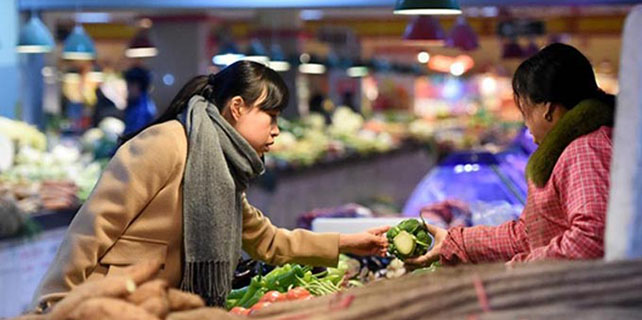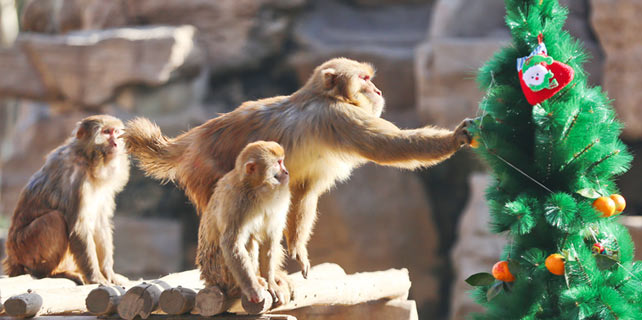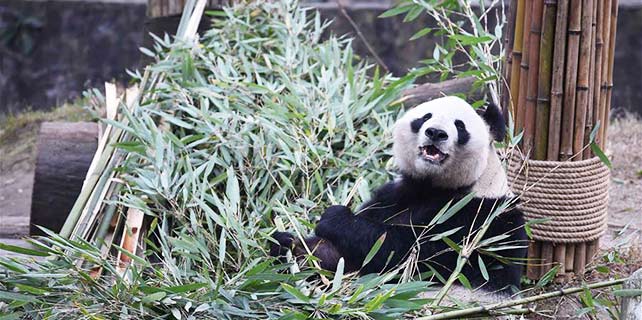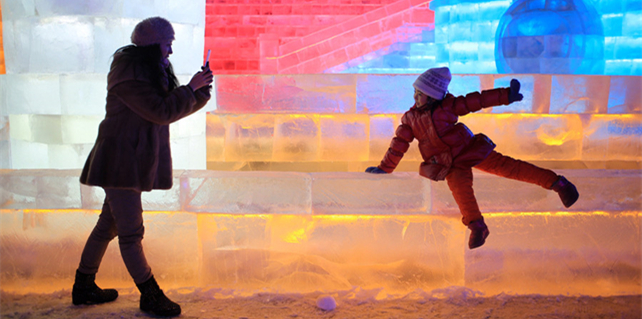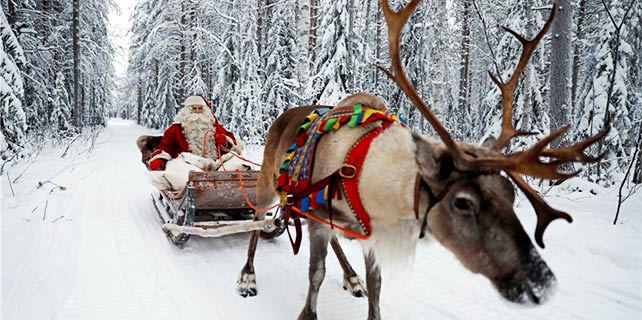3-D printed food leaps from fantasy to the table
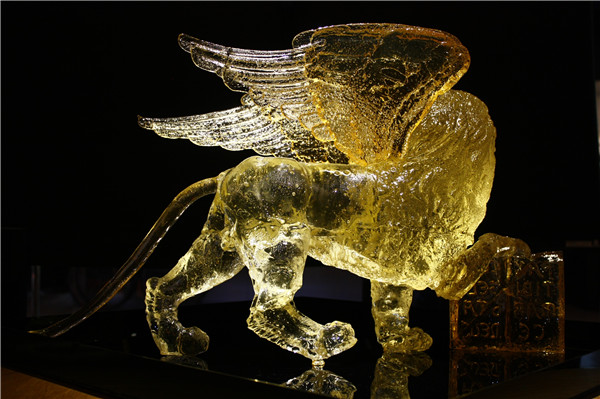 |
|
A honey-colored Venetian lion made out of sugar becomes an attraction at a recent Italian embassy event in Beijing. [Photo provided to China Daily] |
Leandro Rolon has a dream.
"Imagine," he says as we stroll through his Beijing design studio, Defacto. "You get up in the morning and your 3-D printer/oven has already created your custom breakfast bar. It's made for your taste and for your body's needs, because you did a saliva scan before you went to bed. So your oven knows if you have a hangover, or you're low on certain minerals. It also knows if you're spending the morning at the gym or sitting in an office."
We're going to see driverless cars on the road next year, he notes, and technology will push 3-D printing for uses like food equally fast. He'll be speaking on the topic on Wednesday at a "Future of Food" seminar at The Hatchery in Beijing.
"The first printers could only create items from a few materials, but now more than 200 materials can be used," he says. "Sugar. Chocolate. Plastics. Wood."
Rolon and his business partner, Austrian designer David Doepel, have moved quickly, too.
Trained as an architect, the chatty Rolon says he enjoyed that work but became frustrated because many commissioned structures are never built.
"Great drawings are nice," he says grinning, "but I wanted to actually see more of my work."
He decided that meant making stuff himself, and teaming up with the similarly passioned Doepel. They decided that the nascent 3-D printing technology would allow them to create in three fields they both enjoyed: architecture, fashion and food.
Architectural models and fantasy confections for pastry chefs are two obvious applications. Other projects were surprises.
"See that?" he asks, pointing to a mannequin wearing a facemask in the Defacto design workroom.
The molded human form has something that such figures generally don't, he says: ears. Their client needed to show its PM2.5 masks fitting properly on the face, so the Defacto team designed and molded heads with proper ears.
As they create a portfolio, Rolon and Doepel are finding they can fabricate all kinds of goods-edible or otherwise. Their designs have ranged from plate-sized company logos to an immense modular structure that set a Guinness World Record for the largest 3-D printed structure. That commissioned piece was an attraction at a recent suburban Chinese mall promotion.
Then there's the lion.
"The Italian embassy wanted something for a special event," says Rolon. "We played with several ideas, and finally came up with the Venetian lion." The mythical beast, about the size of a suitcase before they added an impressive pair of wings, was made out of sugar, and the honey-colored centerpiece drew lots of oohs and ahs at the gala dinner.
Sugar is a good material to work with, he adds. Chocolate, with its finicky melting temperatures, is less practical than the duo had initially hoped.
Fast-changing technology, they say, will soon allow more complicated creations, such as the daily-changing breakfast bar.
"Think about disaster relief," says Rolon. "You could drop a 3-D printer into the area with a helicopter or a drone, and people could make food with the raw material they have there."
Other ideas are a bit less noble.
"It would be amazing to make a Ferrari," he says with a huge grin. "If they won't hire us, we may just do it anyway."
Leandro Rolon has a dream.
"Imagine," he says as we stroll through his Beijing design studio, Defacto. "You get up in the morning and your 3-D printer/oven has already created your custom breakfast bar. It's made for your taste and for your body's needs, because you did a saliva scan before you went to bed. So your oven knows if you have a hangover, or you're low on certain minerals. It also knows if you're spending the morning at the gym or sitting in an office."
We're going to see driverless cars on the road next year, he notes, and technology will push 3-D printing for uses like food equally fast. He'll be speaking on the topic on Wednesday at a "Future of Food" seminar at The Hatchery in Beijing.
"The first printers could only create items from a few materials, but now more than 200 materials can be used," he says. "Sugar. Chocolate. Plastics. Wood."
Rolon and his business partner, Austrian designer David Doepel, have moved quickly, too.
Trained as an architect, the chatty Rolon says he enjoyed that work but became frustrated because many commissioned structures are never built.
"Great drawings are nice," he says grinning, "but I wanted to actually see more of my work."
He decided that meant making stuff himself, and teaming up with the similarly passioned Doepel. They decided that the nascent 3-D printing technology would allow them to create in three fields they both enjoyed: architecture, fashion and food.
Architectural models and fantasy confections for pastry chefs are two obvious applications. Other projects were surprises.
"See that?" he asks, pointing to a mannequin wearing a facemask in the Defacto design workroom.
The molded human form has something that such figures generally don't, he says: ears. Their client needed to show its PM2.5 masks fitting properly on the face, so the Defacto team designed and molded heads with proper ears.
As they create a portfolio, Rolon and Doepel are finding they can fabricate all kinds of goods-edible or otherwise. Their designs have ranged from plate-sized company logos to an immense modular structure that set a Guinness World Record for the largest 3-D printed structure. That commissioned piece was an attraction at a recent suburban Chinese mall promotion.
Then there's the lion.
"The Italian embassy wanted something for a special event," says Rolon. "We played with several ideas, and finally came up with the Venetian lion." The mythical beast, about the size of a suitcase before they added an impressive pair of wings, was made out of sugar, and the honey-colored centerpiece drew lots of oohs and ahs at the gala dinner.
Sugar is a good material to work with, he adds. Chocolate, with its finicky melting temperatures, is less practical than the duo had initially hoped.
Fast-changing technology, they say, will soon allow more complicated creations, such as the daily-changing breakfast bar.
"Think about disaster relief," says Rolon. "You could drop a 3-D printer into the area with a helicopter or a drone, and people could make food with the raw material they have there."
Other ideas are a bit less noble.
"It would be amazing to make a Ferrari," he says with a huge grin. "If they won't hire us, we may just do it anyway."







